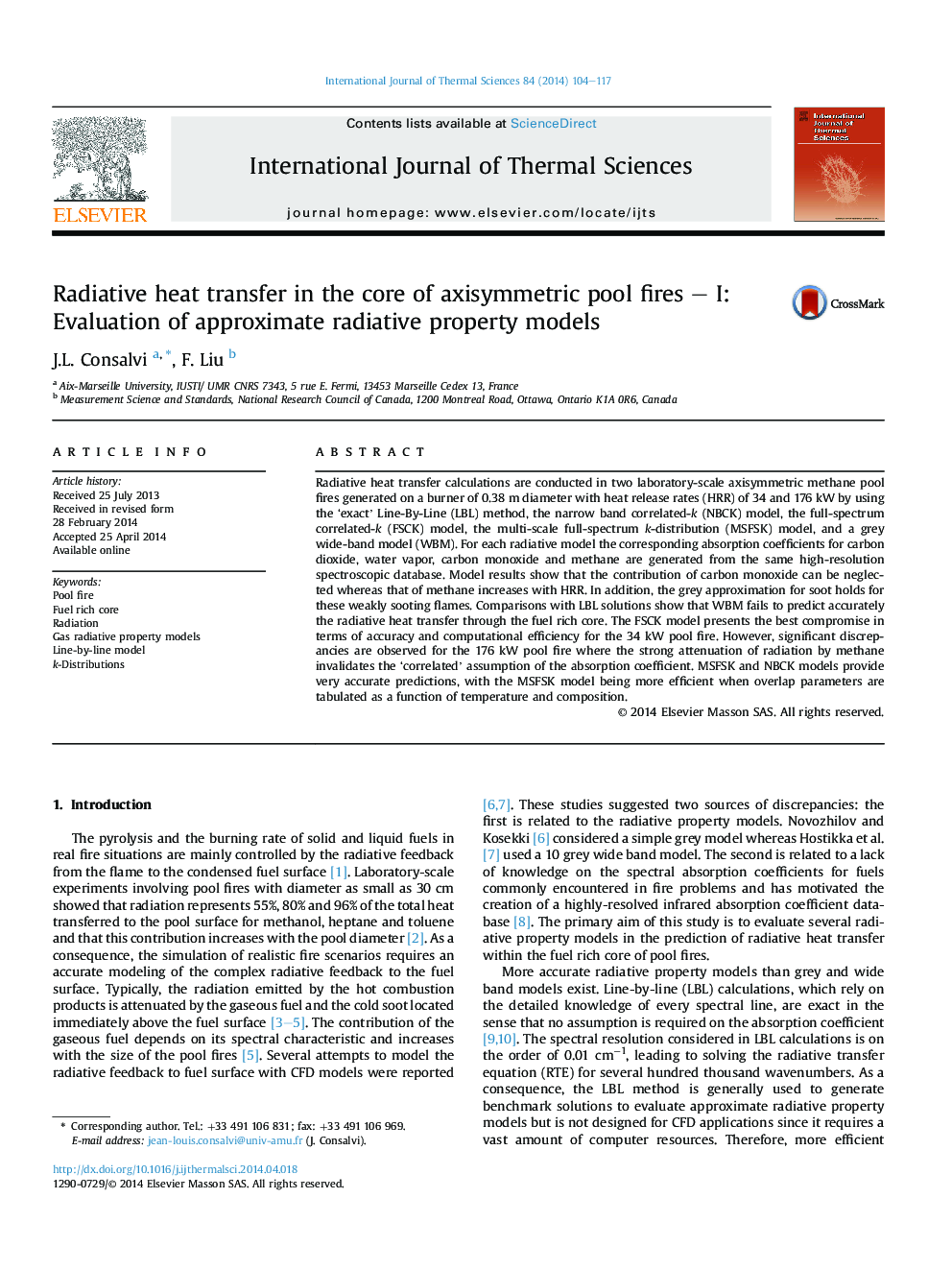| Article ID | Journal | Published Year | Pages | File Type |
|---|---|---|---|---|
| 668706 | International Journal of Thermal Sciences | 2014 | 14 Pages |
Abstract
Radiative heat transfer calculations are conducted in two laboratory-scale axisymmetric methane pool fires generated on a burner of 0.38Â m diameter with heat release rates (HRR) of 34 and 176Â kW by using the 'exact' Line-By-Line (LBL) method, the narrow band correlated-k (NBCK) model, the full-spectrum correlated-k (FSCK) model, the multi-scale full-spectrum k-distribution (MSFSK) model, and a grey wide-band model (WBM). For each radiative model the corresponding absorption coefficients for carbon dioxide, water vapor, carbon monoxide and methane are generated from the same high-resolution spectroscopic database. Model results show that the contribution of carbon monoxide can be neglected whereas that of methane increases with HRR. In addition, the grey approximation for soot holds for these weakly sooting flames. Comparisons with LBL solutions show that WBM fails to predict accurately the radiative heat transfer through the fuel rich core. The FSCK model presents the best compromise in terms of accuracy and computational efficiency for the 34Â kW pool fire. However, significant discrepancies are observed for the 176Â kW pool fire where the strong attenuation of radiation by methane invalidates the 'correlated' assumption of the absorption coefficient. MSFSK and NBCK models provide very accurate predictions, with the MSFSK model being more efficient when overlap parameters are tabulated as a function of temperature and composition.
Related Topics
Physical Sciences and Engineering
Chemical Engineering
Fluid Flow and Transfer Processes
Authors
J.L. Consalvi, F. Liu,
